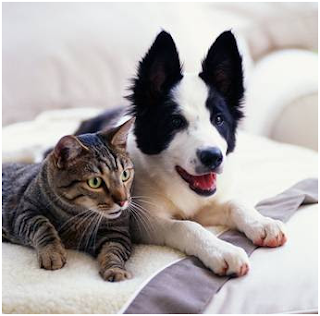Courtesy of Life's Abundance Blog 6/21/21
Pet Safety While Travelling
The clouds are lifting - both literally and figuratively - as we head into summer. After what feels like a very, very long winter, people are chomping at the bit to get out of the house and back into the world. But what about your pets? Are you taking them with you?
Travel in 2021 won’t be entirely like it was before, but those very same travel trends set the stage for a dog-friendly trip. According to AirBnB, who experienced a 128% increase in customers looking for a home away from home during the pandemic, more than six out of ten people are looking to take a trip this year within driving distance from home. Paris and Rome, the darlings of 2019 travel, are out. Instead, people are eyeing the Great Smoky Mountains, Breckenridge, and Palm Springs.
Hotels are out, too. With more people working remotely than ever before, people aren’t looking for a spa-like indulgence nearly as much as they are a different view out of the front window. With rules and requirements changing from day to day, people are also waiting until the last minute to commit to a trip. That’s easier said than done when you’re also needing to plan for a pet.
Road trips with pets bring a whole different set of contingencies, but none more important than this: how do you keep dogs safe in the car?
For many people, the answer is: you don’t. And the results can be tragic. Here are three reasons you should consider a dog restraint, if you aren’t using one already:
Injuries. According to BarkBuckleUp, a 60 pound dog travelling at 35 mph, which isn’t even freeway speed, becomes a 2700 pound missile during an accident. Not only is that catastrophic for the pet, they can also cause serious injury to other passengers.
Distractions. A pet who panics and tries to get into your lap or under your feet can be a serious problem.
Loss. The number one reason pets die in traffic accidents isn’t from injuries sustained in the incident. When first responders arrive at the scene of an accident and encounter a frantic, unrestrained animal, it is extremely common for them to escape and, sadly, run into traffic. I have seen this firsthand in the ER, and it’s horrible.
So now that we know “no restraint” is the worst option of all, what are our other choices?
BETTER. Keeping your pet in a crate in the car is better than nothing. I see this frequently, especially with larger dogs where seat belt restraints are more difficult to use. Although it may not be as good as other means of restraint in terms of preventing injury, a crated pet is much less likely to escape your car during an accident or even at a road stop. Ideally you will have your crate secured to the car to keep it stable.
BEST. Restraints and carriers specifically designated for dogs are the safest and most effective option for travel. If you have a small dog, you can buy a carrier with safety belt integration built in.
For larger dogs, you’re most likely looking at a harness that either connects to the car’s seat belt or hooks into a latch system. For my two large dogs, I find the harnesses a good compromise between safety and usability, as they often have a separate attachment for a regular leash to make it pretty quick to get them in and out for rest stops on a road trip.
So which choice is right for you? That can be a tricky one. Because pet harnesses and crates are not required to meet specific safety standards, you’d have no way to know as a consumer which harnesses actually keep the pet secured during an accident. The Center for Pet Safety, a non-profit dedicated to establishing safety standards for pet products, performed actual crash tests with a variety of harnesses and crates to designate those worthy of a CPS certification. Many restraints failed the test. You can find a list of approved products that received the CPS certification on the Center for Pet Safety.
But at the end of the day, the best option is going to be the one you actually use. Once you have that part squared away, you can get onto the fun part- deciding where to go!
👉👀 AND A NOTE FROM ME - NEVER EVER [EVER] LEAVE YOUR DOG, CAT OR ANY PET UNATTENDED IN A CAR ESPECIALLY DURING THESE HOT SUMMER MONTHS!!
If you found this interesting, check out these related stories:
Fire Safety And Prevention For Families With Pets





